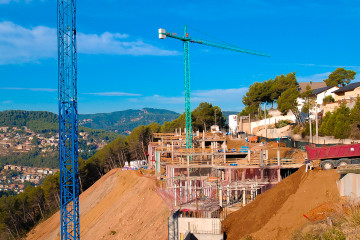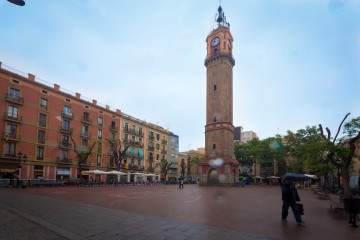Concrete and Reinforced Concrete Works
Concrete and reinforced concrete works play a key role in construction, especially in mountainous regions like the Costa Brava in Spain. Monolithic concrete is used for structures that work under compression. If tensile forces are present, metal reinforcement is added, making it reinforced concrete.
Applications of Reinforced Concrete
Monolithic reinforced concrete is used for massive foundations, non-typical building parts, tunnels, viaducts, TV towers, industrial chimneys, dams, retaining walls, and monuments. These structures are highly durable, and the material easily adapts to complex shapes, allowing for curved elements.
Advantages of Concrete and Reinforced Concrete
Concrete and reinforced concrete are cost-effective due to the availability of raw materials (sand, gravel) and the use of cement as a binder. They are versatile and highly durable materials.
Stages of Concrete and Reinforced Concrete Work
The process includes:
-
Assembling and installing prefabricated formwork panels and blocks;
-
Setting up scaffolding, walkways, and work platforms;
-
Installing prefabricated elements for hybrid structures;
-
Installing and mounting reinforcement;
-
Pouring concrete structures;
-
Maintaining concrete during curing;
-
Dismantling, cleaning, and repairing formwork and scaffolding for reuse.
These stages are repeated cyclically, optimizing cost and efficiency.
Quality Control
Quality control is carried out at every stage of the process. Special attention is given to verifying reinforcement before concreting, documented as "hidden works." To ensure concrete strength, at least three samples are taken per pour, and results are recorded in the technical documentation. These tests are performed by specialized laboratories contracted by the main contractor.

Townhouses in Vallirana
An example of large-scale development includes 14 individual VIP houses and townhouses in the quiet and exclusive town of Vallirana, located near Barcelona. Vallirana is home to businesspeople who wish to spend their evenings in an environmentally clean area while staying close to their work in Barcelona. High standards for construction quality, speed of execution, …





